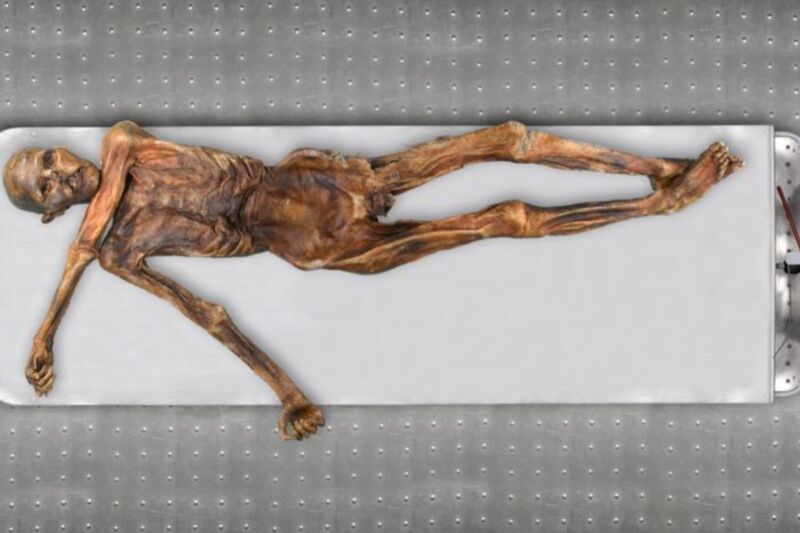New genetic analysis of Ötzi the Iceman yields some surprising findings

In 1991, a group of hikers found the mummified remains of Ötzi the Iceman emerging from a melting glacier in the Alps—likely murdered, judging by the remains of an arrowhead lodged in his shoulder. The mummy’s genome was first sequenced in 2012, whereby the world learned that he likely had brown eyes, type O blood, blocked arteries, Lyme disease, and lactose intolerance. That first genetic analysis also determined that Ötzi was descended from Steppe Herders hailing from Eastern Europe who migrated to the region some 4,900 years ago.
However, according to a recent paper published in the journal Cell Genomics, Ötzi actually has more common ancestry with early farmers who migrated from Anatolia roughly 8,000 years ago, and the earlier findings were the result of modern DNA contaminating the original sample. The authors also used the latest advanced sequencing technology to paint a more accurate picture of the Iceman’s appearance and other genetic traits. Most notably, his skin was probably much darker than previously assumed, and he was likely bald, or nearly so, when he died.
As previously reported, archaeologists have spent the last 30 years studying the wealth of information about Copper Age life that Ötzi brought with him into the present. Studies have examined his genome, skeleton, last meals, tattoos, and the microbes that lived in his gut. For instance, in 2016, scientists used DNA sequencing to identify how Ötzi’s clothing was made and found that most of it was made from domesticated cattle, goats, and sheep, although his hat was made from brown bear hide and his quiver from a wild roe deer.
A 2018 paper took a closer look at Ötzi’s tools, revealing details of his lifestyle, his last days, and the trade networks that linked far-flung Alpine communities. Also in 2018, scientists analyzed the remnants of Ötzi’s last meal in his stomach, concluding that he ate a hearty mountaineer’s high-fat diet of red deer, wild goat, and whole-grain einkorn wheat—but he may also have accidentally eaten toxic ferns.
Given the extraordinary preservation of the body, the accepted interpretation is that Ötzi fled from the valley after being attacked and froze to death in the gully where his mummified remains were found. His body and the tools he brought with him were quickly buried beneath the ice and remained frozen under a moving glacier for the next 5,300 years. The gully protected the remains from damage by the glacier.
But in 2022, scientists suggested that Ötzi died elsewhere on the mountain and that normal environmental changes gradually moved his remains down into the gully. Further, for the first 1,500 years after his death, Ötzi’s remains likely thawed and refroze at least once and quite possibly several times. That means it’s much more likely that another ice mummy could be discovered, since no extraordinary circumstances are required to explain Ötzi’s preservation.
https://arstechnica.com/?p=1963228